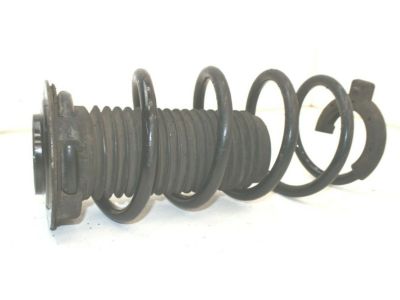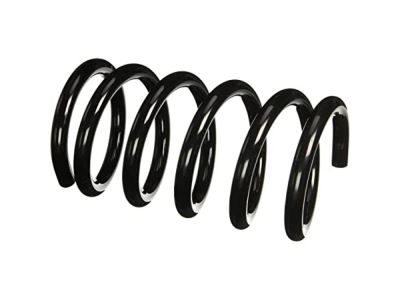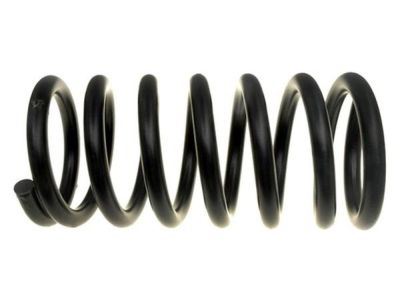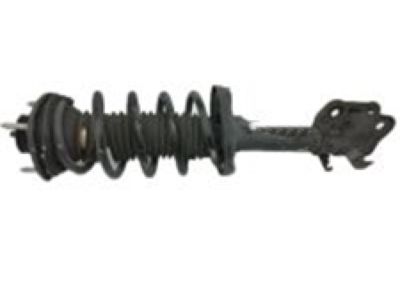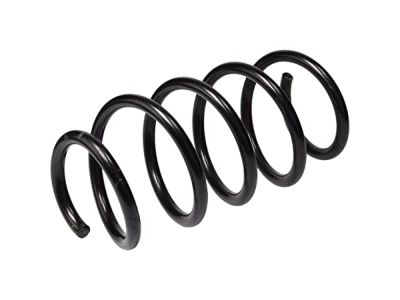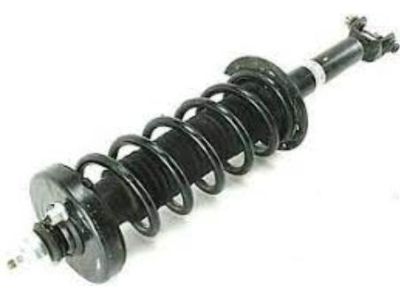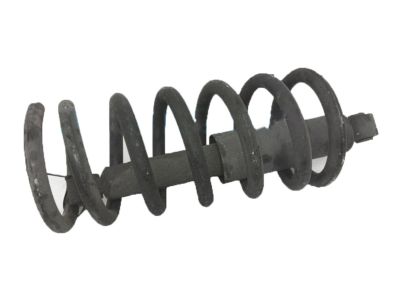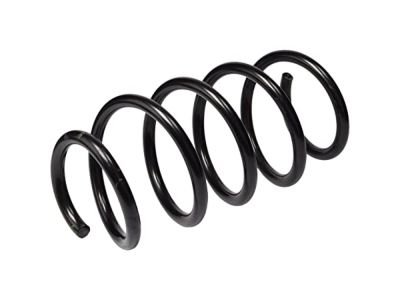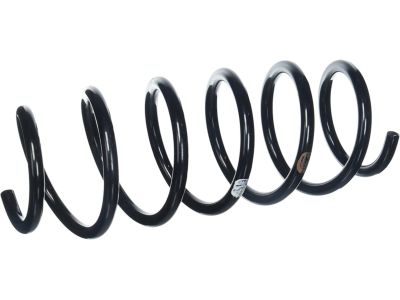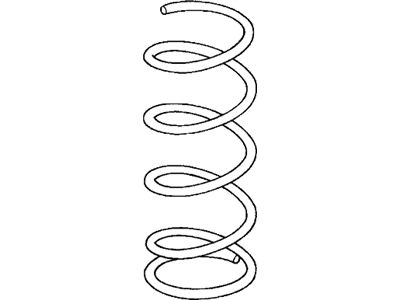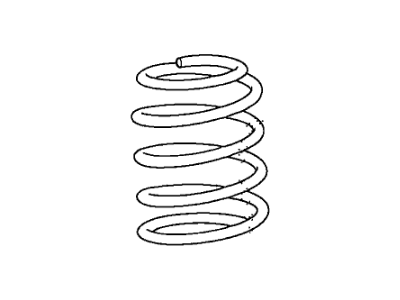×
- Live Chat
- 1-888-984-2011

My Garage
My Account
Cart
Genuine Honda Odyssey Coil Springs
Strut Spring- Select Vehicle by Model
- Select Vehicle by VIN
Select Vehicle by Model
orMake
Model
Year
Select Vehicle by VIN
For the most accurate results, select vehicle by your VIN (Vehicle Identification Number).
60 Coil Springs found
Honda Odyssey Spring, Right Front
Part Number: 51401-TK8-A62$172.62 MSRP: $245.90You Save: $73.28 (30%)Honda Odyssey Spring, Left Front
Part Number: 51406-TK8-A62$172.62 MSRP: $245.90You Save: $73.28 (30%)Honda Odyssey Spring, Right Rear
Part Number: 52441-TK8-A12$85.57 MSRP: $120.87You Save: $35.30 (30%)Honda Odyssey Spring, Right Front
Part Number: 51401-SHJ-L11$73.33 MSRP: $103.57You Save: $30.24 (30%)Honda Odyssey Spring, Right Front
Part Number: 51401-THR-A51$38.68 MSRP: $54.63You Save: $15.95 (30%)Honda Odyssey Spring, Left Front
Part Number: 51406-TK8-A02$133.78 MSRP: $190.57You Save: $56.79 (30%)Honda Odyssey Spring, Right Front
Part Number: 51401-THR-A01$38.68 MSRP: $54.63You Save: $15.95 (30%)Honda Odyssey Spring, Right Front
Part Number: 51401-SHJ-L01$73.33 MSRP: $103.57You Save: $30.24 (30%)Honda Odyssey Spring, Left Front
Part Number: 51406-SHJ-L11$73.33 MSRP: $103.57You Save: $30.24 (30%)Honda Odyssey Spring, Left Front
Part Number: 51406-SHJ-L31$73.33 MSRP: $103.57You Save: $30.24 (30%)Honda Odyssey Spring, Rear (8.80) (Meritor)
Part Number: 52441-S0X-A33$178.18 MSRP: $291.95You Save: $113.77 (39%)Honda Odyssey Spring, Right Front
Part Number: 51401-SHJ-L31$73.33 MSRP: $103.57You Save: $30.24 (30%)Honda Odyssey Spring, Right Front
Part Number: 51401-SHJ-L41$73.33 MSRP: $103.57You Save: $30.24 (30%)Honda Odyssey Spring, Right Front (Purple)
Part Number: 51401-SHJ-A15$102.75 MSRP: $210.47You Save: $107.72 (52%)Honda Odyssey Spring, Right Rear
Part Number: 52441-TK8-A03$85.57 MSRP: $120.87You Save: $35.30 (30%)
| Page 1 of 3 |Next >
1-20 of 60 Results
Honda Odyssey Coil Springs
These are fabricated from a metal plate that is wound into a spiral shape to from Coil springs found of Honda Odyssey cars, these play crucial roles in taking the weight of the car and conditioning of the car by absorbing the force of bumps on roads. They assist in keeping the vehicle at the right height in relation to its wheels in order to eradicate problems which include low ride and worn out tires among others. When the coil springs are worn out, the following options are available, standard OEM, variable rate for the vehicles with bad roads and for vehicle with high cargo loads, there are the upgraded cargo coils. For the past few years, coil springs used in Honda Odyssey have been of different types such as the linear rate, progressive, and the dual rate spring. In the linear rate springs, the rate remains constant while in the progressive springs its offers a smoother ride at higher spring rates. Dual rate springs are those with two different densities - high and low - thus improving the vehicle's performance. Coil springs are also variable at their premiere, thus enabling the economical constant modification of the vehicle height to fit the next wheel/tire set. In the final analysis of part 3 of consumer report, it is clear that Honda Odyssey coil springs significantly contribute to smooth and stable driving.
In search of affordable OEM Honda Odyssey Coil Springs? Consider browsing through our extensive inventory of genuine Honda Odyssey Coil Springs. Not only do we provide market-leading prices and a manufacturer's warranty, but we also pride ourselves on exceptional customer service and swift delivery.
Honda Odyssey Coil Springs Parts Questions & Experts Answers
- Q: What should you do if the struts or coil springs show signs of wear on Honda Odyssey?A: If the struts or coil springs are leaking, no longer dampen, or have physical damage like chipped, sagging, or cracked coil springs get all the facts before working on anything since the strut/shock absorber assemblies are non-repairable if a problem occurs. Fully assembled strut assemblies with springs may be purchased in an exchange part from with will prove advantageous. Further to the above, whether the route taken is to replace a single part or embark on a whole car diagnosis always ensure the price and availability of the parts accessed via side steps. It is possible to start by lifting the strut and spring assembly followed by fixing it in a vise covered with wood or rag, however one should avoid over tightenIng. According to the tool manufacturer's direction, place a spring compressor on the spring and compress the spring to the extent that all pressure is off the upper spring seat; this can be ascertained by shaking the spring. Clamp the strut piston rod with an Allen key and loosen and take off the thrust bearing retaining nut with a box-end key, when doing this set the parts aside in order of disassembly. Look at the bearing in the suspension support to ensure that there is free movement and look at the rubber part of the upper mount and if it is worn, cracked or has an unpleasant smell, it has to be replaced. Take your upper spring seat out of the damper shaft, make sure that there is no crack in it and that it is hard and take off your upper insulator of the damper shaft. Carefully remove the compressed spring from the assembly with the ends pointed out lest the pressure build up cause injuries then place it a safe place After sometime mark the springs LEFT and RIGHT if you are removing both of them. Pull off the dust cover plate and the dust cover, and then withdraw the rubber bump stop off the damper shaft but ensuring it has signs of wear and if it does then replace it. For reassembly, which the damper rod to its full extent and replace the rubber bump stop, the dust cover and the dust cover plate. The compressed coil spring should then be placed on the lower seat of the damper so that the end is placed on the recessed portion of the whole lower seat part then the insulator together with the spring seat, the bearing and the suspension support should be fitted. Last of all, attach the washer and the nut to the stud, and tighten it to the recommended torque setting, then, using the spring compressor tool remove it before fitting the strut/spring assembly.
Related Honda Odyssey Parts
Browse by Year
2024 Coil Springs 2023 Coil Springs 2022 Coil Springs 2021 Coil Springs 2020 Coil Springs 2019 Coil Springs 2018 Coil Springs 2017 Coil Springs 2016 Coil Springs 2015 Coil Springs 2014 Coil Springs 2013 Coil Springs 2012 Coil Springs 2011 Coil Springs 2010 Coil Springs 2009 Coil Springs 2008 Coil Springs 2007 Coil Springs 2006 Coil Springs 2005 Coil Springs 2004 Coil Springs 2003 Coil Springs 2002 Coil Springs 2001 Coil Springs 2000 Coil Springs 1999 Coil Springs 1998 Coil Springs 1997 Coil Springs 1996 Coil Springs 1995 Coil Springs
